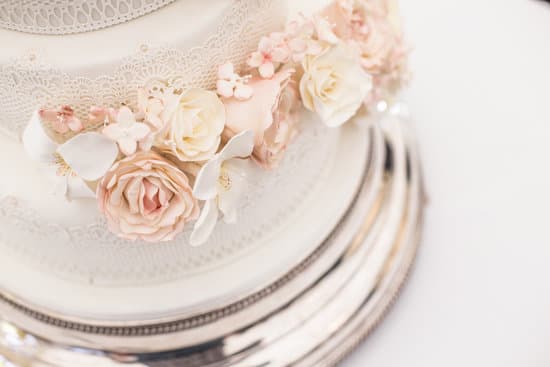When it comes to tying the knot, one of the most enduring symbols of love and commitment is the wedding band. This simple yet powerful piece of jewelry holds a significant place in modern-day wedding ceremonies, serving as a tangible representation of the bond between two individuals. From traditional ceremonies to contemporary celebrations, the exchange of wedding bands marks the beginning of a shared journey for couples embarking on married life together.
The history of wedding bands traces back centuries, with origins rooted in ancient customs and beliefs. Over time, the practice of exchanging rings evolved into a symbolic gesture signifying eternal love and devotion.
Today, the tradition remains an integral part of weddings around the world, transcending cultural boundaries and societal norms. As couples exchange vows and slip on their wedding bands, they are not only expressing their commitment to each other but also honoring a timeless ritual that has stood the test of time.
When it comes to choosing the perfect wedding band, there are a myriad of options available to suit every style and preference. From classic designs to contemporary twists, couples can select from a variety of metals, stones, and styles to find a ring that truly reflects their individuality. Whether opting for a sleek platinum band or a sparkling diamond-encrusted ring, selecting the right wedding band is a personal decision that symbolizes unity and everlasting love.
History of Wedding Bands
The tradition of exchanging wedding bands dates back centuries, with roots in ancient Egypt and Rome. In ancient Egypt, the circle was a symbol of eternity, representing an unending bond between two individuals. The Egyptians believed that the vein of love ran directly from the ring finger to the heart, making it the perfect place to wear a symbolic ring. Similarly, in ancient Rome, rings were exchanged as a sign of ownership and commitment in marriage.
Evolution of Wedding Bands
Over time, the style and significance of wedding bands have evolved. In medieval Europe, “posy rings” became popular, engraved with romantic poems or messages. During the Renaissance period, elaborate gold bands adorned with gemstones made a statement of wealth and status. The modern wedding band as we know it today began to take shape in the 19th century when mass production made them more accessible to couples of all social classes.
Global Traditions
While the exchange of wedding bands is a common practice in Western cultures, other countries have their own unique traditions surrounding wedding jewelry. For example, in Indian weddings, brides often receive intricate gold bangles or bracelets called “kadas” as symbols of marriage. In some African cultures, elaborate beadwork or brightly colored rings are exchanged during traditional ceremonies. Despite these variations, the underlying symbolism of commitment and unity remains constant across different cultures and traditions.
Types of Wedding Bands
The variety of wedding bands available today offers couples endless options to choose from when selecting this timeless symbol of love and commitment. From classic gold bands to more modern designs featuring diamonds and gemstones, the world of wedding bands is filled with diversity. When it comes to styles, couples can opt for traditional plain bands, intricate designs, or even matching sets for a cohesive look.
In terms of metals, popular choices for wedding bands include yellow gold, white gold, platinum, and rose gold. Each metal has its unique characteristics in terms of durability, shine, and color. Couples can also choose to mix metals for a more personalized touch. Additionally, the use of alternative materials like titanium or tungsten is gaining popularity for their strength and contemporary appeal.
Stones are another element that can be incorporated into wedding bands to add sparkle and symbolism. While diamonds remain a top choice for their beauty and brilliance, other gemstones such as sapphires, rubies, or emeralds are also becoming more common in wedding band designs. These colorful stones can represent personal meanings or birthstones that hold sentimental value to the couple.
| Types | Information |
|---|---|
| Metal Options | Yellow Gold, White Gold, Platinum, Rose Gold |
| Styles | Classic Plain Bands, Intricate Designs, Matching Sets |
| Stones | Diamonds (most popular), Sapphires, Rubies, Emeralds |
Choosing the Perfect Wedding Band
When it comes to choosing the perfect wedding band, there are several factors to consider to ensure that you find the ideal ring that suits your style and budget. One of the first things to think about is the metal of the wedding band. Common options include gold, platinum, titanium, and silver.
Gold comes in various shades like yellow, white, and rose, so you can pick one that complements your skin tone and personal preferences. Platinum is durable and hypoallergenic, making it an excellent choice for those with sensitive skin.
In addition to considering the metal of the wedding band, you should also think about the style that best represents your personality. From classic and traditional designs to modern and unique styles, there is a wide range of options available. Some couples opt for matching wedding bands for a cohesive look, while others prefer customized designs that reflect their individuality. Vintage-inspired wedding bands have also become popular among those who appreciate timeless elegance.
Furthermore, when selecting a wedding band that fits your budget, it’s essential to establish a clear spending limit beforehand. Keep in mind that factors like the type of metal, design intricacy, and any additional gemstones will affect the cost of the ring.
You may also want to explore alternative options such as lab-created diamonds or moissanite for a more budget-friendly yet equally stunning choice. By taking these tips into consideration, you can confidently choose a wedding band that not only complements your style but also aligns with your financial plan.
| Metal Type | Popular Styles | Price Range |
|---|---|---|
| Gold | Classic designs | $500 – $3000 |
| Platinum | Modern styles | $1000 – $5000 |
| Titanium | Sleek and minimalist looks | $200 – $1000 |
Customization Options
When it comes to choosing the perfect wedding band, customization has become an increasingly popular option for couples looking to add a personal touch to their special rings. Customizing your wedding band allows you to create a one-of-a-kind piece that reflects your unique style and love story. From engraving meaningful messages or dates to incorporating birthstones or other special symbols, the possibilities for customization are endless.
Here are some popular ways couples are customizing their wedding bands:
- Engraving: Many couples choose to engrave their wedding bands with initials, names, dates, or even a special phrase that holds sentimental value.
- Adding Gemstones: Birthstones, favorite colors, or symbolic gems can be incorporated into the design of the wedding band to add a pop of color and personal significance.
- Metal Choices: Customizing the type of metal used in the wedding band allows for flexibility in achieving a unique look. Options range from traditional gold and platinum to rose gold or even mixed metals for a modern twist.
Whether you opt for intricate designs that tell your love story or subtle details that hold personal significance, customizing your wedding bands is a wonderful way to make your rings truly yours. The process of creating customized wedding bands often involves working closely with a jeweler to bring your vision to life.
By adding these personalized elements, your wedding bands become more than just symbols of commitment – they become tangible representations of your relationship and the journey you are embarking on together.
Wedding Band Trends
Wedding bands have evolved over time, reflecting changing trends in fashion and personal style. Today, couples are increasingly drawn to unique designs that showcase their individuality and love story. From unconventional shapes to mixed metals, there is a wide array of options to choose from when selecting a wedding band.
When it comes to unique designs, one trend that has gained popularity in recent years is the use of alternative materials such as wood, ceramic, or even meteorite in wedding band construction. These non-traditional materials add an unexpected element to the ring’s design while still maintaining the symbolism of commitment and eternity.
Another trend that has been making waves in the world of wedding bands is the resurgence of vintage-inspired pieces. Whether it’s intricate Art Deco patterns, delicate filigree work, or romantic Victorian motifs, vintage-inspired wedding bands offer a sense of nostalgia and timeless elegance. Couples looking to add a touch of old-world charm to their special day are opting for these classic designs with modern twists.
In addition to unique designs and vintage-inspired pieces, stacking wedding bands have become a popular trend among couples seeking versatility and customization options. By mixing and matching different styles, metals, and stones, individuals can create a cohesive look that reflects their personal taste while also allowing for flexibility in wearing their wedding bands on different occasions.
This trend opens up endless possibilities for creating a one-of-a-kind bridal set that truly symbolizes the unique bond shared between partners.
Maintenance and Care
Cleaning Your Wedding Band
To keep your wedding band looking its best, regular cleaning is essential. Depending on the material of your ring, there are different methods for cleaning. For metal bands, a simple solution of warm water and mild soap can help remove dirt and grime. Use a soft brush to gently scrub the band and rinse with clean water. For gemstone-encrusted bands, it’s best to consult with a jeweler for specific cleaning instructions to avoid damaging the stones.
Preventative Maintenance
In addition to regular cleaning, there are also steps you can take to prevent damage to your wedding band. Avoid wearing your ring while doing activities that may expose it to harsh chemicals or abrasive materials.
Remove your ring before swimming in chlorinated pools or using cleaning products that can tarnish or scratch the metal. It’s also advisable to have your wedding band inspected by a jeweler regularly to check for loose stones or any signs of wear that may require maintenance.
Storage and Care Tips
Proper storage is key in maintaining the condition of your wedding band. When not wearing your ring, store it in a separate compartment in a jewelry box or pouch to prevent it from getting scratched by other pieces. Avoid tossing your ring carelessly on hard surfaces or exposing it to extreme temperatures.
Additionally, consider having your wedding band professionally polished and re-plated if necessary to restore its original shine and luster over time. By following these maintenance and care tips, you can ensure that your wedding band remains a cherished symbol of love and commitment for years to come.
The Symbolism Behind the Ring
The wedding band holds more than just aesthetic value; it symbolizes a deep and lasting commitment between two individuals. The circular shape of the wedding band represents eternity, with no beginning or end, mirroring the timeless nature of love and marriage. This simple yet powerful symbol carries profound meaning in various cultures and traditions around the world, emphasizing the unbreakable bond between spouses.
Beyond its physical properties, the wedding band serves as a continuous reminder of the vows exchanged during the wedding ceremony. It acts as a tangible expression of love, loyalty, and dedication between partners. As couples wear their wedding bands daily, it becomes a part of their identity and a visible symbol of their marital status.
In conclusion, the significance of a wedding band extends far beyond its material worth; it is a representation of the sacred union between two individuals embarking on a lifelong journey together. Whether adorned with intricate designs or kept simple and classic, the wedding band encapsulates the essence of marriage – unity, fidelity, and everlasting commitment.
As you embark on your journey together as newlyweds, let your wedding bands serve not only as decorative jewelry but also as meaningful symbols of your enduring love and devotion to each other.
Frequently Asked Questions
What Is a Wedding Band vs Wedding Ring?
A wedding band is a ring exchanged between partners during the wedding ceremony to symbolize their commitment and love for each other. It is usually a simple metal band without any stones or embellishments, while a wedding ring can refer to any ring exchanged as part of the wedding ceremony.
What Is the Purpose of a Wedding Band?
The purpose of a wedding band is to serve as a visible and tangible symbol of the couple’s commitment and love for each other. It acts as a constant reminder of the vows exchanged on their wedding day and signifies their lifelong dedication to one another through thick and thin.
Can Any Ring Be a Wedding Band?
Not just any ring can be considered a wedding band. Traditionally, a wedding band is a plain metal ring without diamonds or gemstones that is worn by both partners after they exchange vows. While some couples may choose more elaborate rings, the simplicity of a classic wedding band has remained popular for its timeless symbolism of everlasting love.

I have been involved in marriages for over 20 years helping couples and singles understand more about them.





